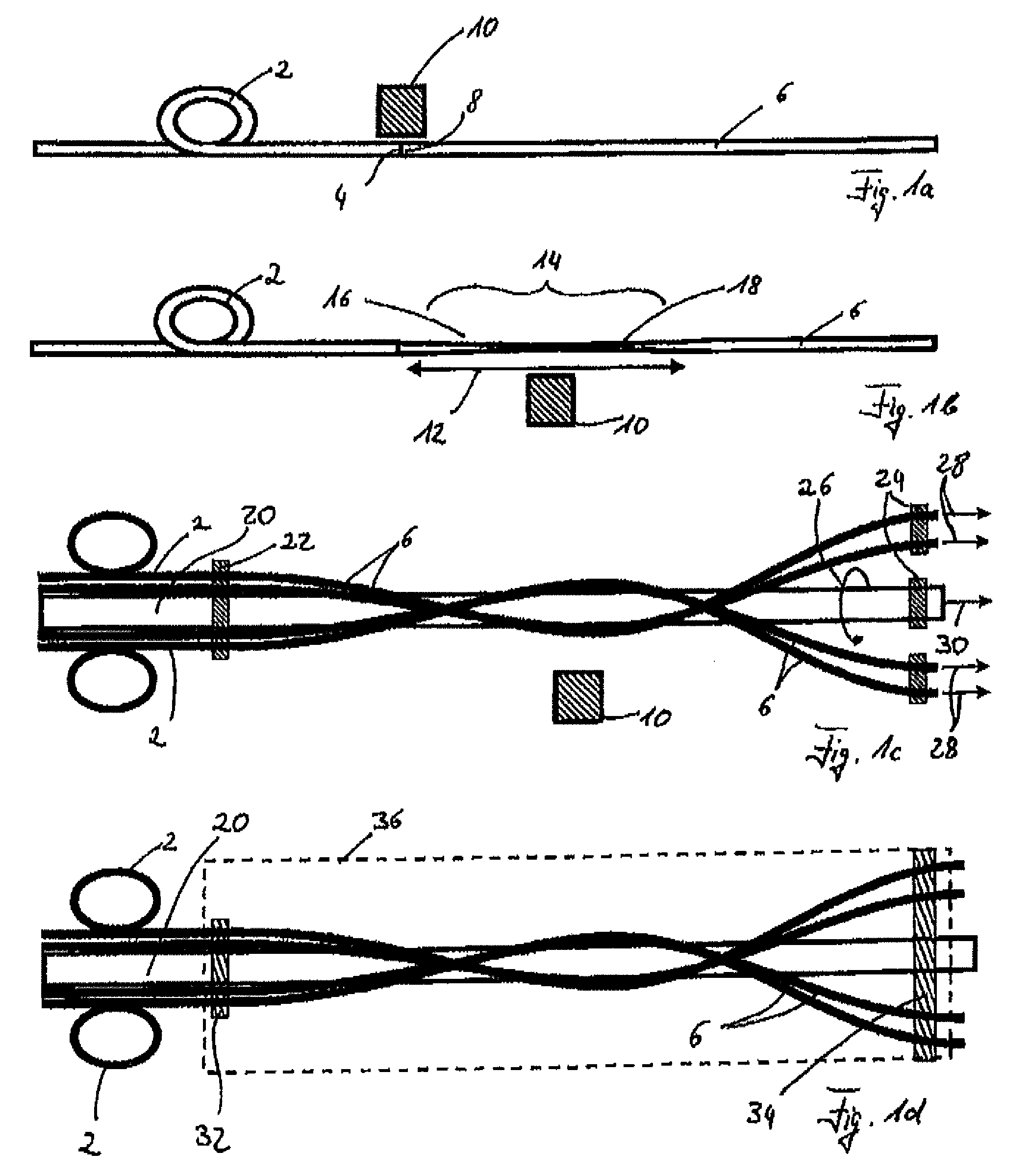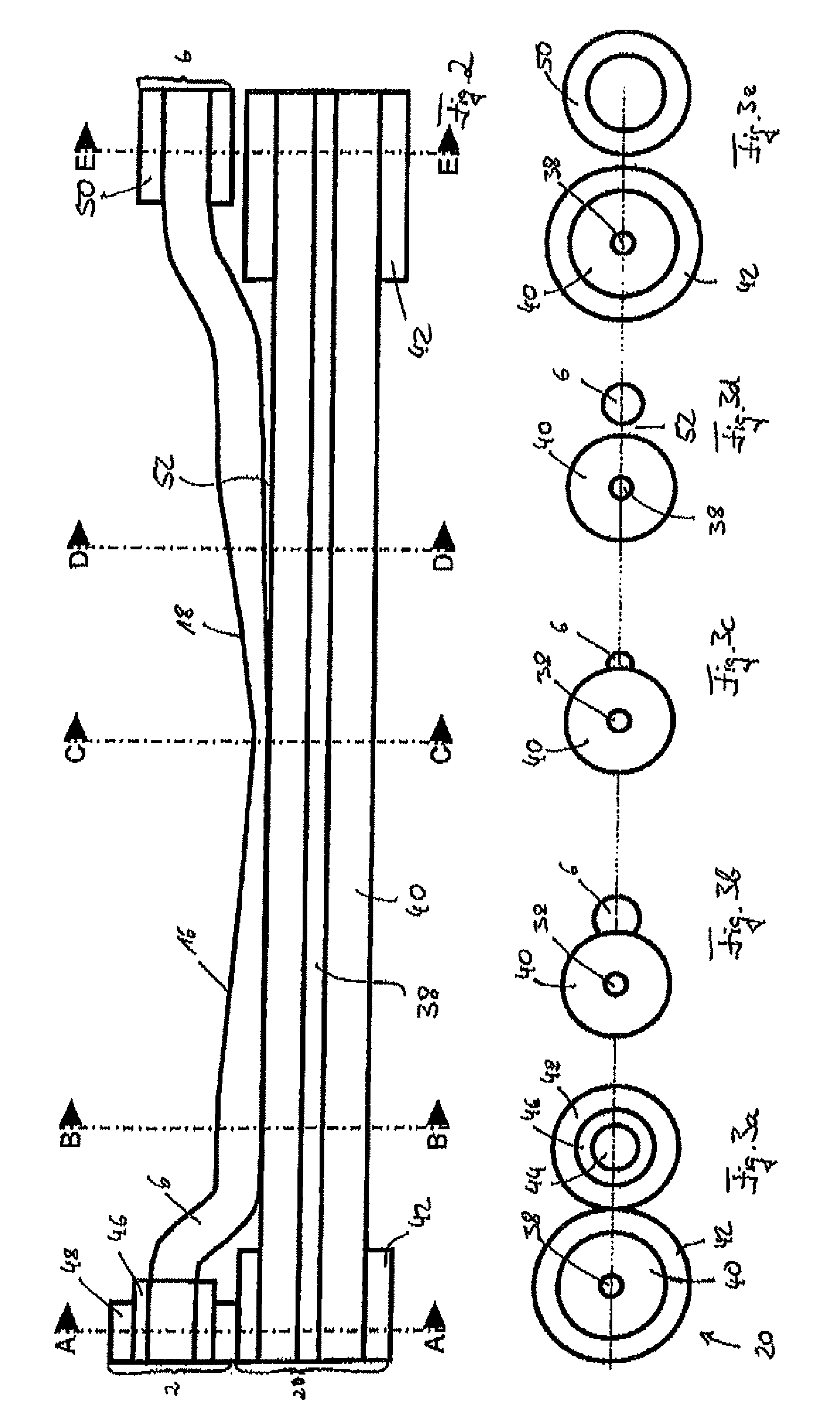Coupling arrangement for non-axial transfer of electromagnetic radiation
a non-axial transfer and electromagnetic radiation technology, applied in the direction of instruments, electrical appliances, basic electric elements, etc., can solve the problems of splicing between the tapered fibers, weak degradation of the beam quality of the laser, and the tapering process of the feeding fiber and the signal fiber, so as to achieve the effect of increasing the coupling efficiency
- Summary
- Abstract
- Description
- Claims
- Application Information
AI Technical Summary
Benefits of technology
Problems solved by technology
Method used
Image
Examples
Embodiment Construction
[0055]Throughout the description same reference numbers are used to denote same parts.
[0056]FIG. 1a to 1d show different steps of a method according to one embodiment of the present invention. FIG. 1a shows a feeding fiber 2 with an output end 4, which is connected with an intermediate fiber 6. The intermediate fiber 6 is fusion spliced to the output end 4 of the feeding fiber 2 with its input end 8. Schematically a heat source 10 is shown, which can for example be a micro gas flame, a plasma source, a filament source or a laser. The heat source 10 is used to heat the intermediate fiber 6 until a given temperature is reached. The heat source 10 can move along the longitudinal position of the intermediate fiber 6, which is to be heated. By the length of this movement the length of the converging taper portion can be adjusted. The heat source 10 moves along the intermediate fiber 6 with a certain frequency in a back and forth movement. This can be achieved by moving the heat source 10...
PUM
| Property | Measurement | Unit |
|---|---|---|
| thickness | aaaaa | aaaaa |
| cladding diameter | aaaaa | aaaaa |
| diameter | aaaaa | aaaaa |
Abstract
Description
Claims
Application Information
 Login to View More
Login to View More - R&D
- Intellectual Property
- Life Sciences
- Materials
- Tech Scout
- Unparalleled Data Quality
- Higher Quality Content
- 60% Fewer Hallucinations
Browse by: Latest US Patents, China's latest patents, Technical Efficacy Thesaurus, Application Domain, Technology Topic, Popular Technical Reports.
© 2025 PatSnap. All rights reserved.Legal|Privacy policy|Modern Slavery Act Transparency Statement|Sitemap|About US| Contact US: help@patsnap.com



